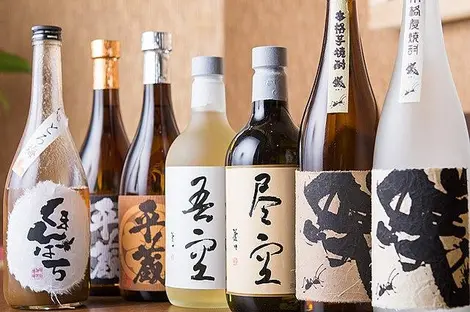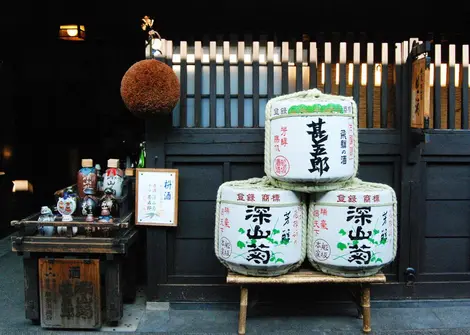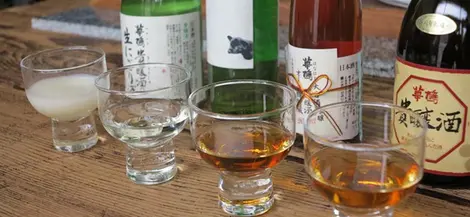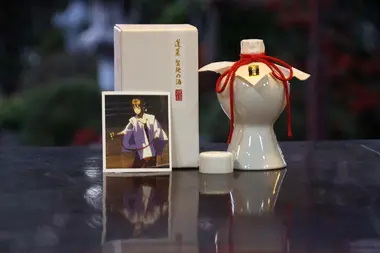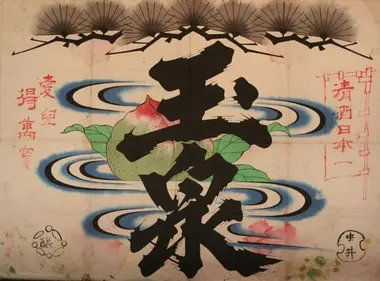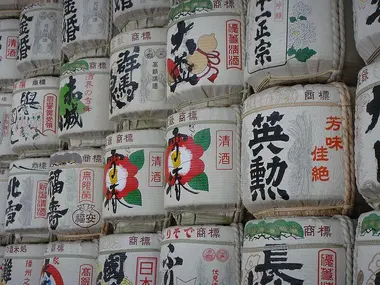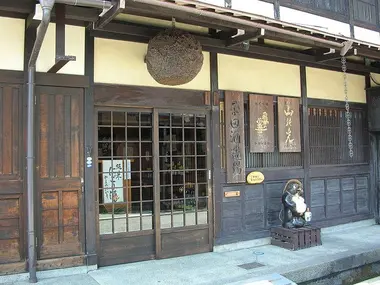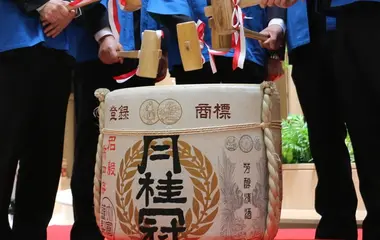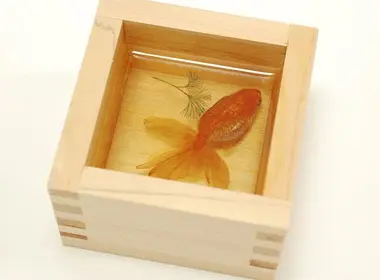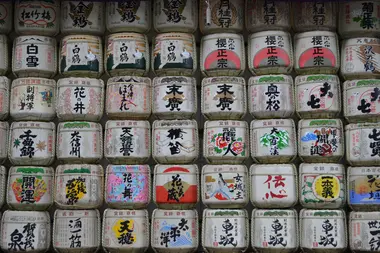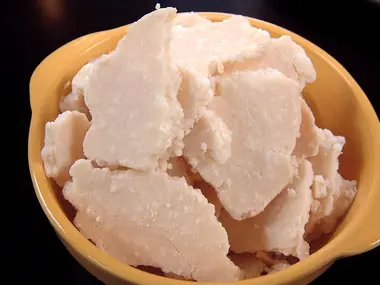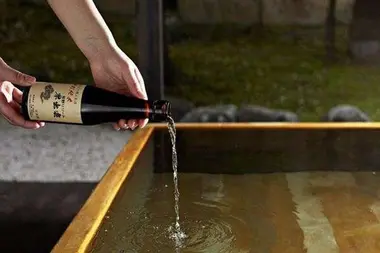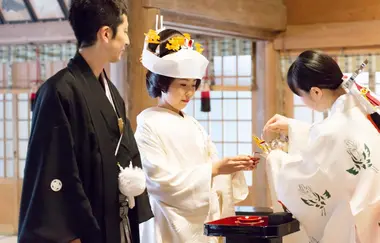10 amazing facts about sake
Surprising sake!
For all Sake lovers, to quench your thirst for knowledge about Sake, here are 10 amazing facts, about the sacred and emblematic alcohol of Japan.
- Kuchi kami sake
The very many spectators of the animated film Your Name were able to ask themselves the question. But what is this drink that Mitsuha prepares? This one prepares kuchi kami sake, literally "mouth chewed sake", the first form of sake. In a thousand-year-old practice of Shinto ceremonies, now abandoned, young girls chewed cooked rice then spat it out into a bottle to prepare sacred sake, served as an offering to the kami (gods). In November 2016, a sake brewery in Hida in Gifu Prefecture even released a limited-edition anime-inspired sake for sale. But rest assured, it was not a real "chewed sake"!
- The komokaburi
In the Edo period (1603-1868), the komokaburi was a barrel (taru) of sake wrapped in a decorated straw mat called a komo, the whole being held together by a rope. Each brewery then declines its design on the komo, these becoming over time more and more worked and colored. A brewery can thus use different models according to the varieties of sake and the retailers. In the Edo period, these protected barrels were used to transport sake to the capital from Kansai. In 1821, these sake deliveries reached a record 1,224,000 komokaburi!
See also: Saijo, the city of sake
- The sugidama or sakabayashi
Sake breweries hang large cedar balls from their storefronts or under their eaves to announce to customers the arrival of new sake (shinshu). Composed of branches pressed together, this sugidama, symbolizing the spirit of the kami (gods) protector of breweries according to ancient belief, measures between 40 and 80 centimeters in diameter. Over time, they turn from deep green to brown; a color change that matches and indicates the maturation of the sake.
- Tanuki's sake
The tanuki, yokai from Japanese folklore that has become a real popular icon, is always represented, in addition to its plump belly and its oversized scrotum, a flask of sake in its hand; a sign of his pronounced taste for food and alcohol. This attribute is thought to originate from a nursery rhyme from the Edo period, sung in the sake brewers' quarters of Kansai. This flask is marked with the maru hachi (the number 8 in a circle), the Tokugawa emblem symbolizing the 8 districts of the family's powerful domain in the former province of Owari (Nagoya region).
See: Japanese monsters and ghosts
- The kagami biraki ceremony
In the 17th century, Tokugawa Ietsuna (1641–1680), 4th Tokugawa shogun opened a barrel of sake in the presence of his daimyos on the eve of an important battle. By winning the victory, the shogun is unaware that he has just given birth to a ceremony of good fortune that will span the centuries. In kagami biraki, practiced every January 11 for more than 300 years, a Shinto priest breaks the lid of a barrel using a mallet to then taste the sake. Can be translated as "opening the mirror", the ceremony must attract good fortune and harmony to the participants. Today, kagami biraki is practiced on many occasions: weddings, martial arts, etc...

Kazaridaru at Itsukushima jinja in Miyajima
S.V.
- Red fish sake or kingyo-shu
It should be noted immediately that no animal has been mistreated to make sake! The expression "goldfish sake" refers to the fraudulent practice of certain breweries during the Sino-Japanese war (1937-1945). Faced with the shortage of rice and strict regulations on the distribution of the cereal, breweries cut sake with water to increase their production and save money. Water is still added to the mix by retailers before it reaches the consumer. This diluted sake is so light in alcohol that a goldfish could swim in it!
- The kazaridaru
Did you know that the sake barrels placed at the entrance of Shinto shrines such as Meiji-Jingu are empty? These decorated barrels called kazaridaru are gifts from sake brewers and producers. For ceremonial purposes, priests indeed need o-miki, a sake reserved for rituals. But the quantities needed to be reduced, the brewers only really supply the equivalent of a bottle or a barrel of sake. The rest of the offering consists of empty barrels. The kazaridaru is a kimochi; a spiritual gesture whose strong symbolic value respects the precepts of the Shinto cult. The kazaridaru are empty in content but by no means meaningless!
- Sake kasu
Nothing goes to waste in sake! The lees (yeast deposit from the fermentation process) are recovered from the bottom of the containers and then transformed into compressed sheets or paste is called sakekazu. This is used in the composition of condiments, kazuzuke (fish or vegetables in brine), and amazake, a traditional sake served during Hina matsuri. The many nutrients in sakekasu have an effect on cholesterol. It is also credited with dietary benefits.
Read: Sake
- Sake, beauty product
It was through serendipity among sake brewers that the beneficial properties of the beverage on the skin were discovered. Indeed, mature brewers managed to maintain perfectly smooth and soft hands over time; real baby skin! The reason for this? The many amino acids in rice wine help fight the effects of aging and impurities. The geishas were not mistaken there. Radiant-skinned beauties embraced bathing with sake as a beauty practice several centuries ago. Japanese cosmetics brands have followed suit and offer various sake-based beauty products.
- The sakazuki
Swapping your cup of sake with another person could bond you forever! In Japan, the practice of sakazuki or the exchange of cups of sake is an ancestral ritual allowing to unite people between them. Among the yakuza, a recruit exchanges his sake with his godfather as a token of loyalty; an initiation ritual known as sakazukigoto. During a traditional wedding ceremony, the spouses engage in san san kudo (three three nine times) where each drinks three sips of sake from three different cups while praying to the kami. This is one of the oldest traditions of Japanese marriage.



